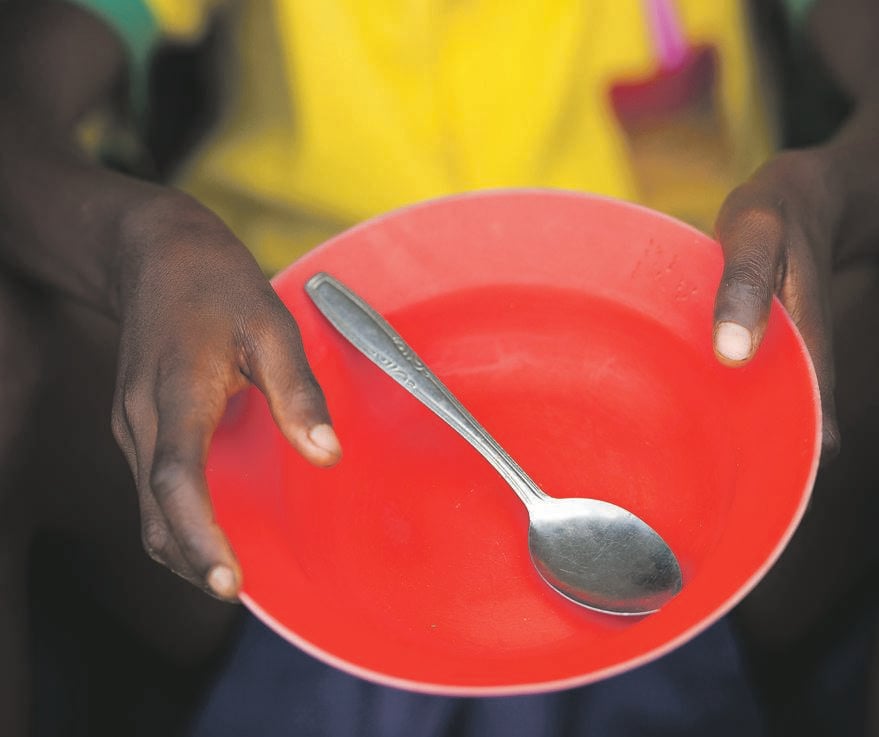
A study gauging the wellbeing of our children shows some progress has been made in reducing poverty and hunger, but not nearly enough.
Last year, one in 10 South African children went to bed hungry at some point.
About 2.1 million children live in households where there is not enough food. Just over a third of these children live in KwaZulu-Natal, and another 20% live in Gauteng.
These are some of the findings of a report titled the South African Child Gauge 2019, which was released last month.
The comprehensive study on the circumstances under which South African children live was conducted by the University of Cape Town’s Children’s Institute, together with Unicef SA, the Centre for Excellence in Human Development at the University of the Witwatersrand, the Tutu Foundation and the Standard Bank Tutuwa Community Foundation.
The number of South African children who go hungry is still high, but the situation has improved since 2002, when 30% of children were going hungry.
“Extending child welfare grants to 12 million children in 2018 has made the biggest contribution to this decline,” the report states.
School feeding programmes, which were serving 9 million pupils in 20 000 schools by the 2016/17 financial year, also helped.
By October, a child welfare allowance of R430 a month was being paid to 12.4 million children.
Welfare grants reduced poverty levels among South African children from the 78% classified as “poor” in 2003 to 59% in 2018.
In 2018, the breadline was calculated on the basis of individuals who have to survive on less than R1 183 a month. When it came to children living below the breadline, black children accounted for 65%, coloured children for 31% and white children for 3%.
“We have made progress over the past decade to reduce child poverty and improve access to services, so there is a strong foundation to build on,” said Lori Lake of the Children’s Institute.
“But almost 60% of children still live below the breadline, 30% do not have water in their homes and 20% live in overcrowded households.”
In addition to hunger, monetary restrictions also lead to an unbalanced diet.
In 2016, a total of 32% of children younger than two and 23% of children aged three to four suffered from stunted growth. Stunting is a chronic condition resulting from malnutrition suffered over a long time.
A health study released in 2017 also showed that 13% of children younger than five were overweight.
This problem worsened as children got older, with 22% of children between the ages of 10 and 14 being classified as overweight or suffering from obesity.
The researchers also looked at children’s access to education. Of the 11.6 million children between the compulsory schoolgoing ages of seven and 17, 232 000 did not attend school in 2018.
Up to 15% of these children had a disability that kept them out of mainstream schools. Children also stopped attending school because of a lack of money or poor academic results, or because they were not accepted at any school.
As for the quality of education in South Africa, the study shows that it is improving, but is still not up to standard.
“Ongoing evaluation by the department of education shows low pass rates for pupils in grades 3 and 6. Internationally comparable studies show that South Africa is performing poorly,” the report states.
The Trends in International Mathematics and Science Study, which tests numeracy skills among Grade 5 children, showed that three out of five pupils in the country could not do basic addition and subtraction.
- Tobacco use is rising among young South African males (between the ages of 15 and 24), according to the South African Child Gauge 2019 study, but the abuse of alcohol has diminished;
- The prevalence of obesity among South African girls increased from 2003 to 2016; and
- A worrying trend cited by the study is that South African teenagers are becoming sexually active earlier.
In 2008, 11.3% of young South African males said they had had sex by the age of 15. In 2017, the figure was almost 20%. In addition, fewer young people are using condoms. In research conducted in 2008, 66% of girls and 85% of boys indicated that they had used a condom with their most recent sexual partner.
By 2017, this had dropped by almost 20 percentage points to 49% of girls and 67% of young men.
The Progress in International Reading Literacy Study, which tests literacy among Grade 4 pupils, showed that four out of five children did not understand what they were reading.
By 2016, only 51% of South Africans between the ages of 20 and 24 had a matric certificate.
However, children’s progress in the foundation phase (from grades R to 3) has improved in recent years.
In 2018, 88% of children between the ages of 10 and 11 completed Grade 3, compared with 78% in 2002.
Access to early-stage educational institutions has also doubled in recent years, the report says.
In 2002, just over 1 million children between the ages of five and six (55%) attended kindergarten. This rose to 2.1 million (92%) in 2018.
In terms of the country’s demographics, 34% of the population (19.7 million people) were younger than 18 in 2018.
Only 34% of the country’s children live with both of their parents, while 43% live with their mother.
In the poorest households, 15% of children live with both parents, while 74% of children in the top 20% income group have their father and their mother at home.
 | ||||||||||||||||||||||||||
Get in touchCity Press | ||||||||||||||||||||||||||
| ||||||||||||||||||||||||||
| Rise above the clutter | Choose your news | City Press in your inbox | ||||||||||||||||||||||||||
| City Press is an agenda-setting South African news brand that publishes across platforms. Its flagship print edition is distributed on a Sunday. |




 Publications
Publications
 Partners
Partners









